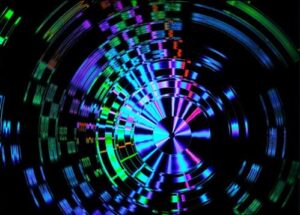Fiber lasers have shown themselves as powerful and effective instruments in various areas including medicine and science. They have also found their place in aspects where there is a need for research and development purposes. For instance, for quantum computing development.
The sophisticated calculations of the quantum computers have become possible due to the photons. In quantum computing, the basic unit of data is called quantum bit, or qubit. In comparison with the traditional bit, qubit can store multiple values at the same time. In the future, specialists are going to combine many qubits together to make better computational power.
Fiber lasers for quantum computing
Fiber lasers have become one of the main technologies for creating the up-to-date quantum computing architectures. This field has reached unprecedented heights by improving quantum software and hardware technologies.
Sophisticated fiber laser systems play a crucial role in quantum equipment development. Specialists are interested in improvement of the laser modules that will suit quantum calculations due to their advantages. They appreciate fiber lasers’ qualities such as high levels of accuracy and control, compact size, etc. Furthermore, they are able to become parts of more powerful and complex solutions.
Techniques of the qubits creating
Nowadays, specialists have learnt how to apply good, reliable qubits with the help of trapped ions. Scientists have found many benefits of their applications. Trapped ions are easily managed and can interact with the nearby neighbors. They provide high rates of fidelity and relatively long coherence time that means the qubits are long-lived. Moreover, they can perfectly match other trapped ion qubits to make quantum algorithms.
There are at least ten methods that are usually applied for creating qubits in quantum computing. Here is a list of a few of them:
Creation qubits with the trapped ions
Why do specialists apply ions meaning charged atoms as qubits? The leading cause is that they can be trapped at the precise location with the help of electric fields.
The first method of the qubits creation with trapped ions is effective technology for quantum computing. The qubits are created by encoding quantum information in the internal states of charged ions. With the help of a fiber laser, the cloud of ions is created. When ions are cooled, they can be trapped with the usage of electric and magnetic fields. Due to the fiber laser proper configuration, specialists can produce robust qubits by encoding quantum information in the internal states of the trapped ions.
This type of qubits has more benefits in comparison with the other types, for example, high accuracy and low error rates. Moreover, this kind of qubits is perfect for manipulation and control of separate qubits and therefore for quantum computing.
Trapped ions are in the foundation of quantum computers. But they are further developing to become powerful for other more complicated devices in the future.
Creation qubits with the neutral atoms
The second method comes from neutral atoms that are applied in encoding quantum information in the internal states for creating qubits. Neutral atoms are relatively insensitive to environmental noise and have long coherence times.
For this method specialists apply a range of optical tweezers to trap and manipulate separate atoms. The tweezers are made with the laser beams focusing on a small spot. With the cooled atoms, there is an opportunity to trap the atoms in tweezers and then create qubits.
Due to this technique, specialists can provide reliable qubits considering the right frequency and timing of the microwave or radio frequency pulses during their creation.
Quantum computing with the help of precise fiber lasers have become an important instrument both in scientific and industrial fields. There is no wonder that they are so widespread due to their physical abilities and simple operational principles. These technologies, along with fiber laser systems, are already well-developed. Producers are constantly looking for a range of new viable solutions that will allow the use of quantum computing in other directions around the world.
Optromix Inc., headquartered in Newton, MA, USA, is a manufacturer of laser technologies, optical fiber sensors, and optical monitoring systems. We develop and manufacture a broad variety of Fiber lasers, СО2 lasers, Ti: Sapphire lasers, Dye lasers, and Excimer Lasers. We offer simple Erbium laser and Ytterbium laser products, as well as sophisticated laser systems with unique characteristics, based on the client’s inquiry.
We manufacture laser modules using our technologies based on the advanced research work and patents of the international R&D team. Laser processes are high-quality, high-precision, easily automated manufacturing solutions that provide repeatability and flexibility.
If you are interested in Optromix fiber laser systems or Optromix CO2 lasers, please contact us at info@optromix.com
